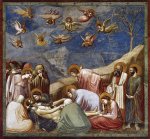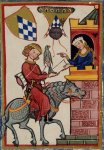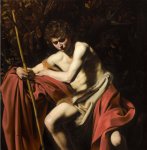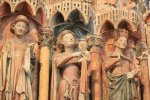Issue (Mirabilia Ars)
-
On issues of Art and Aesthetics
Sobre cuestiones de Arte y Estética
Organized by José María SALVADOR GONZÁLEZ (org.)
Mirabilia Ars 01 (2014/2)

-
Bodies, clothing and social structure: the Germanic art of miniature illustrations in the Codex Manesse (13th century)
Organized by Matheus Corassa da SILVA (org.)
Mirabilia Ars 09 (2018/2) Special Edition

-
Between the sacred and the profane: paths of Western Art
Organized by José María SALVADOR GONZÁLEZ, Matheus Corassa da SILVA (orgs.)
Mirabilia Ars 08 (2018/1)

-
The body in occidental aesthetics
Organized by José María SALVADOR GONZÁLEZ (org.)
Mirabilia Ars 05 (2016/2)

Article (Mirabilia Ars)
-
Art, beauty and reconciliation with our existence
Matheus Corassa da SILVA
Original title: Arte, beleza e reconciliação com nossa existência
Published in
-
Metaphors and symbols in Art History
José María SALVADOR GONZÁLEZ, Matheus Corassa da SILVA
Original title: Metáforas e símbolos na História da Arte
Published in
-
Image and clothing: body places
Matheus Corassa da SILVA
Original title: Imagem e vestuário: lugares do corpo
Published in
-
Presentation: Art and spirituality: questions about religious iconography
José María SALVADOR GONZÁLEZ; Matheus Corassa da SILVA
Original title: Apresentação: Arte e espiritualidade: questões sobre iconografia religiosa
Published in
-
The uniqueness of Manueline bi faceted crucifixes between phantasmatic displacements in artistic contemporaneity
Alexandre Emerick NEVES
Original title: A singularidade dos cruzeiros bifacetados manuelinos entre deslocamentos fantasmais na contemporaneidade artística
Published in
To promote a historical-cultural crossing, I highlight the use of a figural fragment and its correspondences in historical aesthetic models: the pendant arm. From these relationships, a genealogy of the figuration of the body is consolidated, especially from the studies of Georges Didi-Huberman on the survival of the images, notably according to the ghostly model of Aby Warburg. In admitting the figure of the heroic body as a derivation of the figure of the holy body in previous work, I now propose an anachronistic and remissive path, starting with a short contemporary cinematographic scene, in About Schmidt (2002), to arrive at the medieval Portuguese Pietàs in the singular typology of Manueline bifaceted crucifix. My attention, therefore, falls on a significant deviation in relation to the axial paths of Art History, in order to regain a contact between Brazilian art and Portuguese culture, whose connections I suppose are considerably attenuated.
-
Women as a source of aesthetic pleasure in late medieval India
Sara FERNÁNDEZ JUBÍN
Original title: La mujer como fuente de placer estético en la India tardomedieval
Published in
The aim of this article is to spread the role played by those women belonging to the courtly and artistic sphere of late medieval India. Specifically, we will focus on the figure of the pātura, trying to claim a new definition and conception for this term, given its importance in the transmission of Indian dance and musical forms. Although we will start by mentioning a well-known case, further on we will focus our study on a particular pātura, Pravīṇ Rāy, an artist associated to the court of Orchā, the capital city of the ancient Bundelkhaṇḍ – nowadays in Madhya Pradeś. We will begin by outlining some of the legends for which it is popular in the region. Then we will turn to the facts provided by a primary source that is directly related with our protagonist – one of the works of the great poet Keśavdās –, which will allow us to conclude reaffirming the significance of the pāturas and revaluing the role of these artists.


















































































